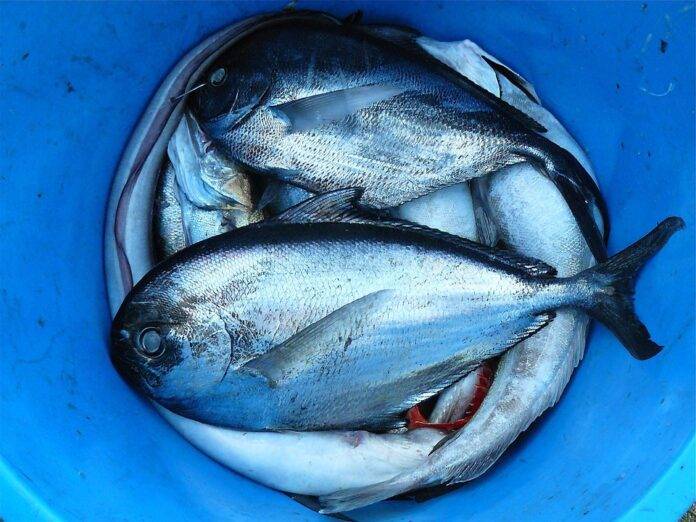Introduction
The global seafood industry is a crucial sector that plays a significant role in the global economy. Seafood is a vital source of protein for millions of people around the world, and the industry continues to grow as demand for seafood products increases. In this report, we will explore the current trends in the global seafood industry, analyze investment patterns, and provide market projections for the future.
Current State of the Global Seafood Industry
The global seafood industry is a multi-billion dollar sector that encompasses a wide range of products, including fish, crustaceans, mollusks, and seaweed. According to the Food and Agriculture Organization (FAO) of the United Nations, global fish production reached a record high of 171 million tonnes in 2020.
Key Players in the Global Seafood Industry
Some of the key players in the global seafood industry include:
1. Mowi ASA
2. Thai Union Group
3. Trident Seafoods
4. Maruha Nichiro Corporation
5. Nippon Suisan Kaisha, Ltd.
These companies are leading the way in seafood production, distribution, and marketing, and are driving innovation in the industry.
Market Trends in the Global Seafood Industry
There are several key trends shaping the global seafood industry, including:
1. Sustainable Fishing Practices: With growing concerns about overfishing and environmental sustainability, many companies are adopting sustainable fishing practices to ensure the long-term viability of seafood stocks.
2. Increasing Demand for Aquaculture Products: Aquaculture, or fish farming, is becoming increasingly popular as a way to meet the growing demand for seafood products. This trend is expected to continue in the coming years.
3. Technological Advancements: Technology is playing a crucial role in the seafood industry, with innovations such as blockchain technology, IoT devices, and artificial intelligence being used to improve traceability, quality control, and efficiency in seafood production.
Investment Trends in the Global Seafood Industry
The global seafood industry is attracting increasing investment from both traditional investors and venture capitalists. According to a report by Grand View Research, the global seafood market is projected to reach $221.6 billion by 2020, with a compound annual growth rate (CAGR) of 3.0% from 2021 to 2028.
Types of Investments in the Seafood Industry
There are several types of investments being made in the seafood industry, including:
1. Direct Investments: Companies are investing in expanding their seafood production facilities, upgrading equipment, and implementing sustainable practices to improve their operations.
2. Venture Capital Investments: Venture capitalists are investing in seafood startups that are developing innovative products and technologies to revolutionize the industry.
3. Mergers and Acquisitions: Consolidation is a common trend in the seafood industry, with companies acquiring competitors to expand their market share and diversify their product offerings.
Regional Investment Patterns
Investment in the seafood industry is not evenly distributed across the globe. Some regions, such as Asia-Pacific and North America, attract more investment due to their large seafood markets and growing populations. In contrast, regions like Africa and Latin America receive less investment, despite having significant seafood resources.
Market Projections for the Global Seafood Industry
Looking ahead, the global seafood industry is expected to continue growing as demand for seafood products increases. Key market projections include:
1. Increased Consumption: As the global population grows and incomes rise, the demand for seafood products is expected to increase, driving growth in the industry.
2. Technological Innovation: Continued advancements in technology are expected to drive further innovation in the seafood industry, leading to improved efficiency, quality, and sustainability.
3. Regulatory Changes: Governments around the world are implementing regulations to promote sustainable fishing practices and ensure the safety and quality of seafood products. These changes are expected to impact the industry in the coming years.
Challenges and Opportunities
While the global seafood industry presents significant opportunities for growth and investment, it also faces several challenges, including:
1. Environmental Sustainability: Ensuring the sustainability of seafood stocks is a major challenge facing the industry, as overfishing and habitat destruction continue to threaten marine ecosystems.
2. Supply Chain Complexity: The seafood supply chain is complex, with products often traveling long distances before reaching consumers. Ensuring traceability and quality control throughout the supply chain is a priority for companies in the industry.
3. Market Volatility: The seafood industry is susceptible to market fluctuations, including changes in consumer preferences, weather patterns, and global trade policies. Companies must be prepared to adapt to these changes to remain competitive.
In conclusion, the global seafood industry is a dynamic sector that offers a range of opportunities for investors, companies, and consumers. By staying informed about current trends, investing in innovation, and embracing sustainable practices, the industry can continue to thrive in the years to come.



